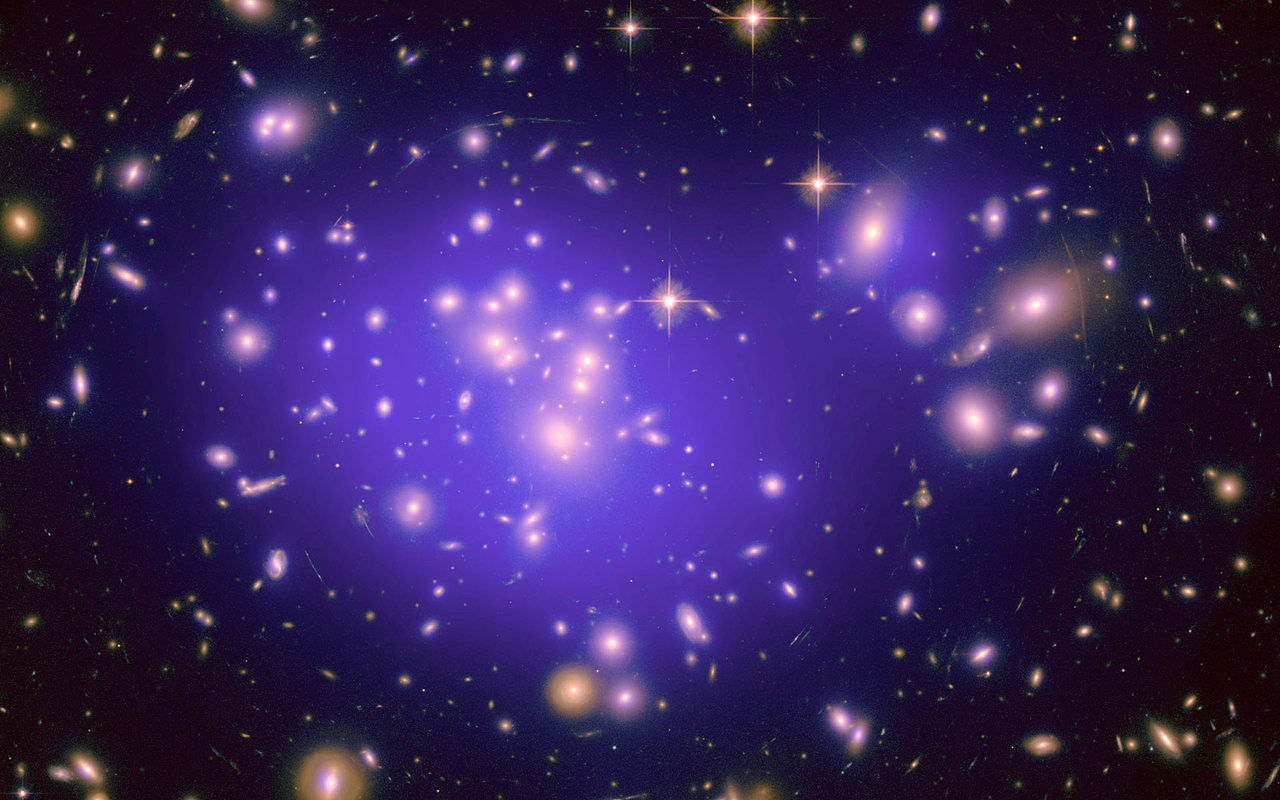
The Mass Distribution of Galaxies through Hubble sequence
Stellar kinematics and circular velocity curves
The amount and distribution of dark matter in galaxies defines the formation, evolution and dynamics of these systems. In this thesis we infer the internal mass distributions of 26 E–Sd galaxies using SAURON and CALIFA two-dimensional stellar kinematic maps. We compare two
modeling approaches – fitting a solution of the axisymmetric Jeans equations and the commonly applied asymmetric drift correction (ADC).

Figure 1: Maps of stellar mean velocity V and velocity dispersion σ (both in km/s), obtained with the SAURON integral-field spectrograph of the two spiral Sb galaxies – NGC5678 and NGC772. Overplotted are stellar observed and modelled (with multi-Gaussian Expansion method) contours, shown in the first three and the last two columns, respectively. The combination of both − VRMS = sqrt(V^2 + σ^2) is then fitted by a solution of the Jeans equations based on the deprojected stellar light distribution that is multiplied with a constant mass-to-light ratio.
As a starting step, I constructed and compared the circular velocity curves of the spiral galaxies, obtained in two different ways. First, I solved the Jeans equations in the axisymmetric case for a given mass distribution, which I inferred from deprojecting the observed surface brightness and multiplying with a constant mass-to-light ratio (Cappellari 2008). I compare the resulting predictions of the second velocity moment VRMS = sqrt(V^2 + σ^2) to the combined maps of the observed mean velocity V and velocity dispersion σ (Figure 1). As a result, I obtained the best-fit model mass distribution, which through Poisson’s equation is related to the gravitational potential and hence, the circular velocity curves.
Second, I extracted mean line-of-sight velocity V and σ profiles along the projected major axis from the corresponding kinematic maps using the kinemetry package of Krajnovic et al. (2006). I corrected these values for inclination to infer the azimuthal velocity and the radial velocity dispersion to obtain the circular velocity curves. Comparing the circular velocity curves, I found that for only one galaxy in our sample ADC and Jeans approaches lead to consistent results. For all remaining galaxies, the ADC approach underestimates the circular velocity curves, as compared to the ones derived with the Jeans model, and when V/σ less than or equal to 1.5, the ADC approach can significantly underestimate the circular velocity curve and hence enclosed mass.

Figure 2: Mass ratios MJAM/MADC as measured at different radii (color coding) versus the ordered- over-random motion at the same radii. Both V/σ (left panel) are directly plotted from the line-of- sight stellar mean velocity and velocity dispersion profiles as well as v_φ/σ_R (right panel) from the deprojected rotation and radial velocity dispersion profiles. The black filled squares with error bars show the biweight mean and standard deviation of the mass ratio per bin with size of 0.2 in V/σ (or v_φ/σ_R ). The discrepancy between the ADC and JAM inferred enclosed masses becomes gradually larger for decreasing V/σ less than or equal to 1.5 (or v_φ/σ_R less than or equal to 1.5), consistent with the presence of a dynamically hot bulge in the inner parts and/or a dynamically hot(ter) and thick(er) disc in particularly the latest-type spiral galaxies invalidating the thin-disc approximation of ADC.
Dark matter fractions

Figure 3: Dark matter content in SAURON galaxies. The resulting total mass-to-light ratios Υtot are compared with the stellar mass-to-light ratio Υpop estimated based on fitting stellar population models to multi-band photometry. The coloring and the symbol size represent galaxy type and luminosity as indicated in the legend. The dashed line indicates the increased Υpop when going from a Chabrier to Salpeter initial mass function, refelecting the effect of increasing the relative fraction of low-mass stars.
Additionally, I compared the dynamically measured total mass-to-light ratios Υtot to the stellar mass-to-light ratios Υpop estimated based on fitting stellar population models to multi- band photometry. I then investigated if the dark matter fractions depend on the luminosity and morphology of spiral galaxies. The relation unexpectedly showed that the late-type spiral galaxies are dark matter dominated in their central regions (∼ 1.5 − 4 kpc) with increasing dark matter content through the Hubble type. Currently, I am verifying this result against the (few) model assumptions.